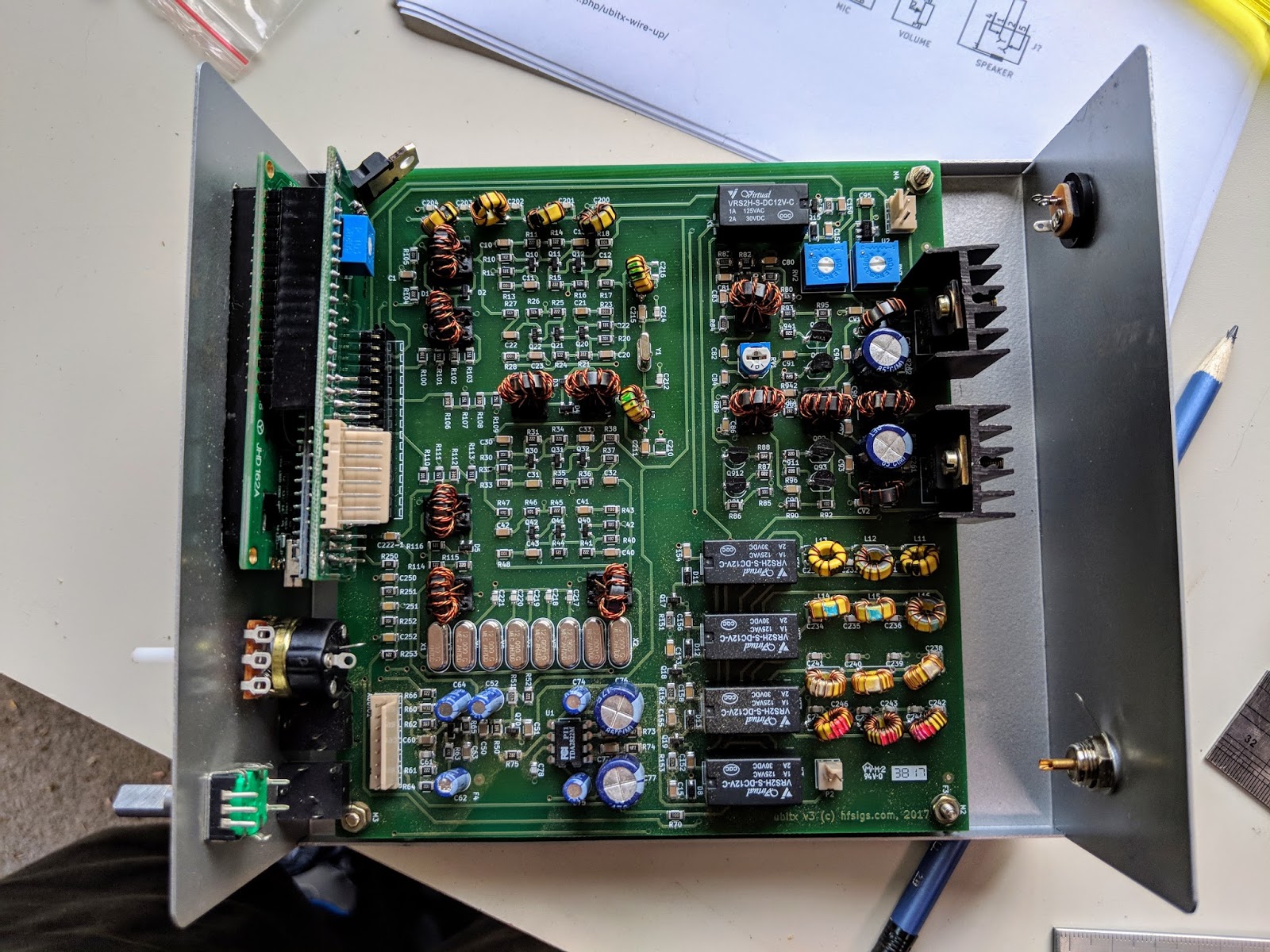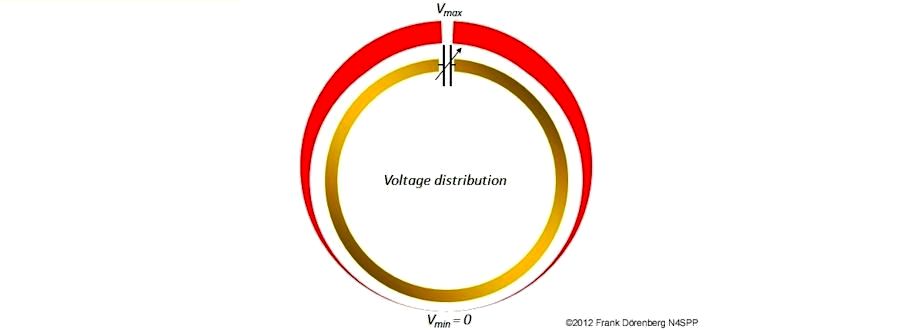
Bernard led off on the third shed workshop for 2018 which was on the topic of “Magnetic loop antennas”. These antennas are great for getting better signal to noise levels out of typical noisy suburban environments. They are also compact and can be mounted on a boundary fence or building to blend into an urban environment. On transmit they are less sensitive to changes in the surrounding environment (e.g. resonance changes observable on wire antennas with wet weather).
Ten members turned out on Sunday 1 July 2018. A summary of his presentation, theory of magnetic loop antennas and instructions for constructing these antennas can be downloaded here:
Bernard can be seen giving a presentation to kick off:
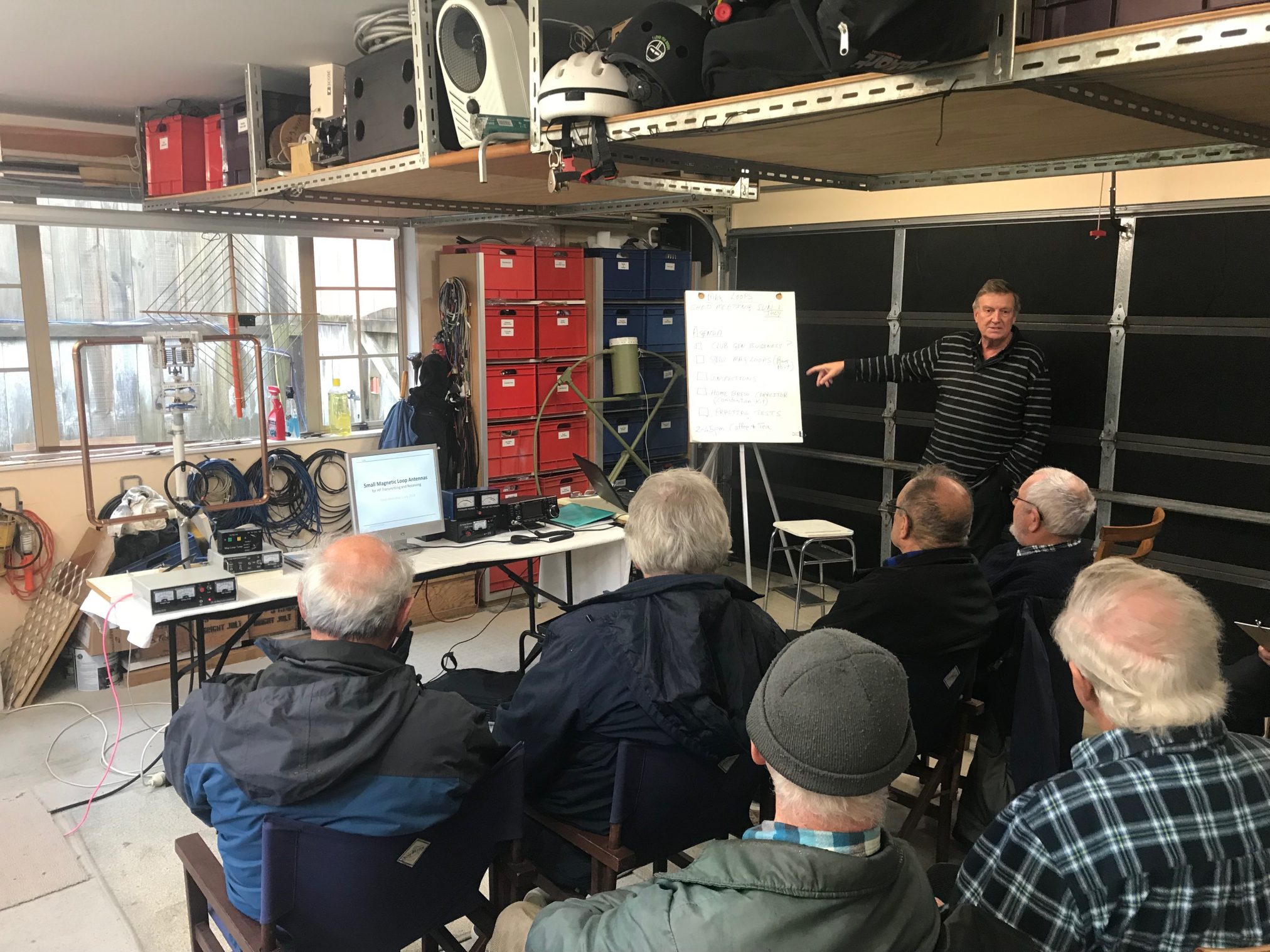
Several examples of loop antennas were available for inspection including this multiband loop for 15m through 10m:
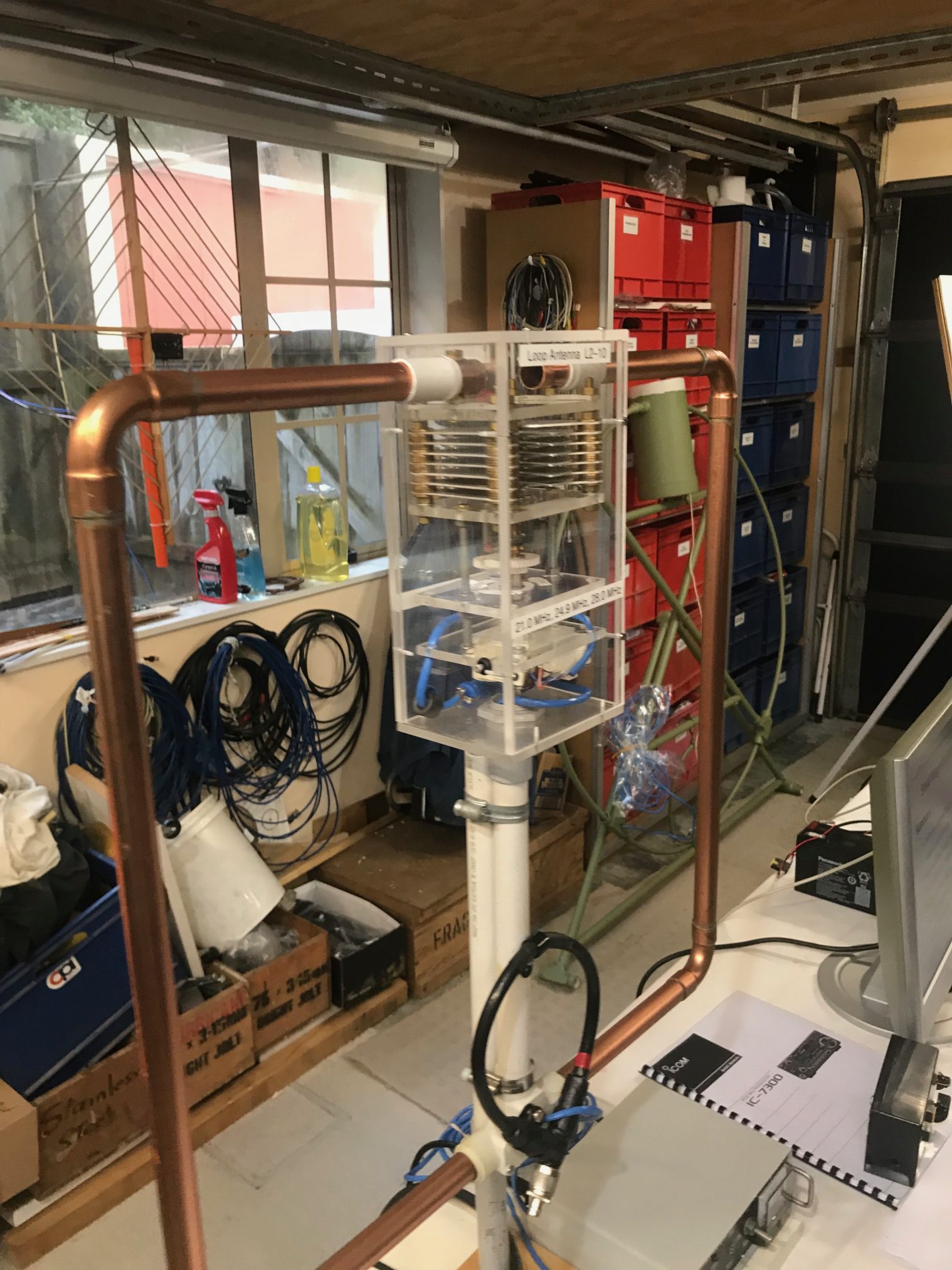
And a close up of the butterfly tuning capacitor:
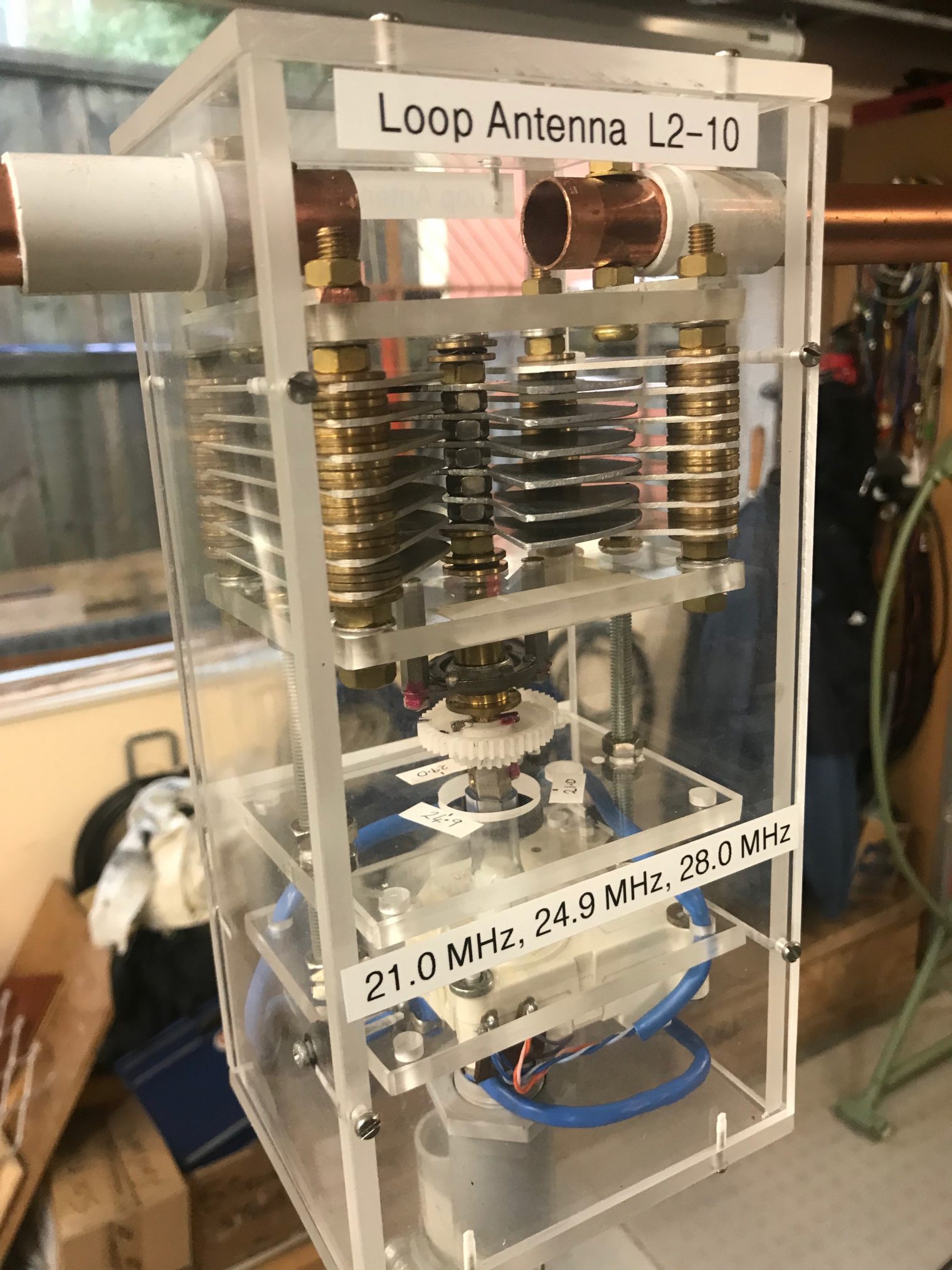
The feedpoint and feed system:
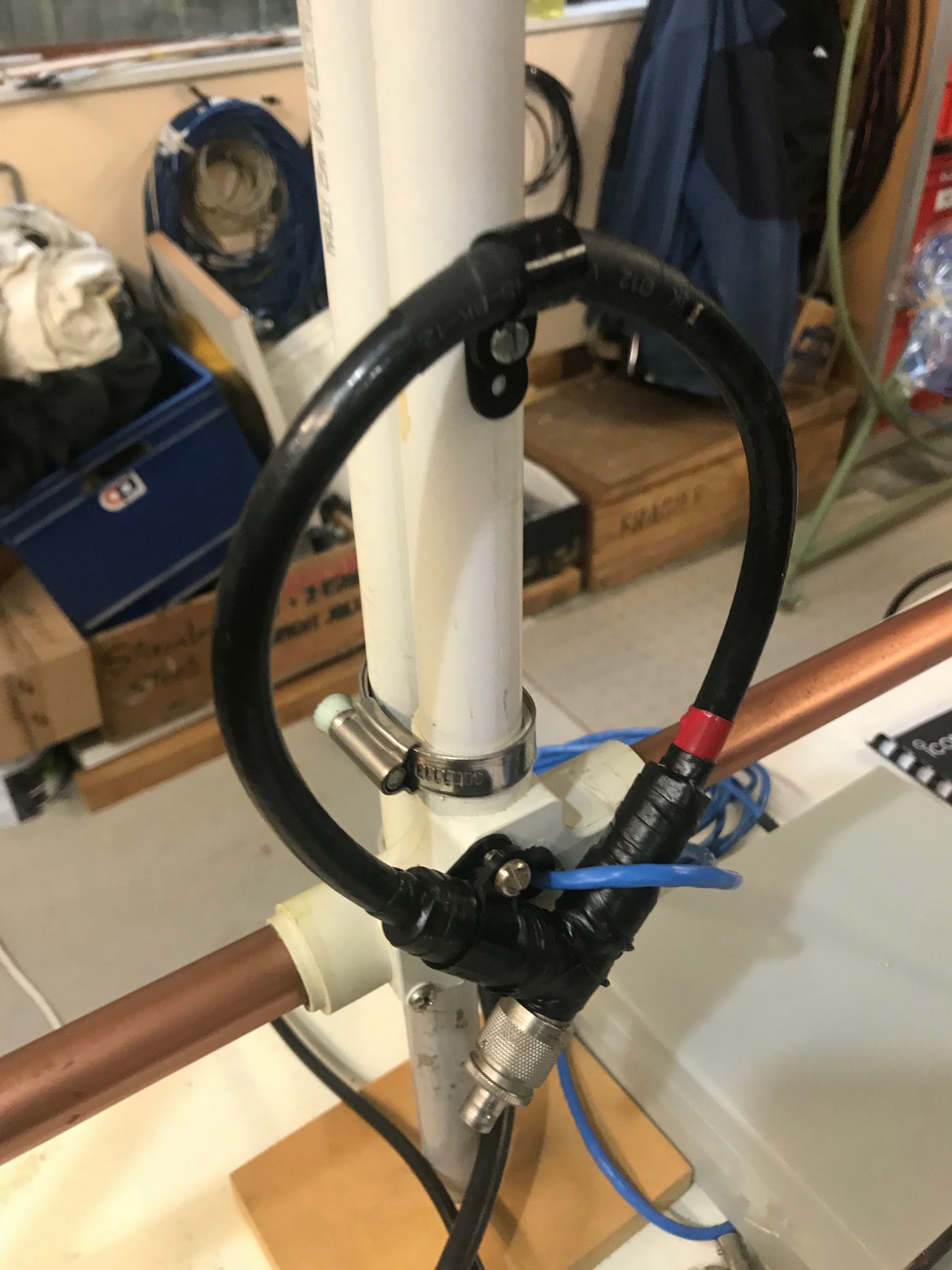
And finally, a mag loop controller box that Bernard has constructed (he has several!):
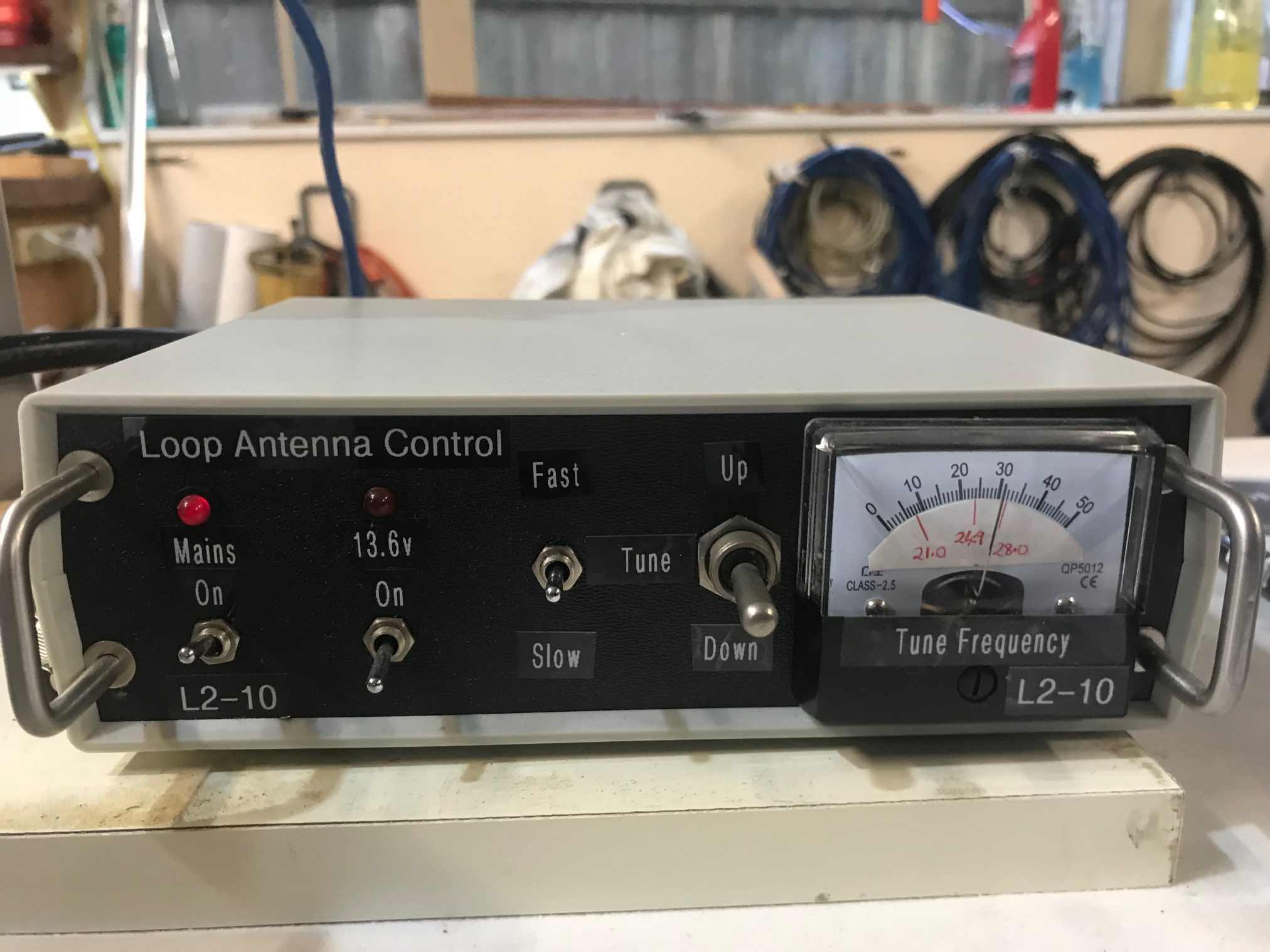
A special price has been worked out for branch members who wish to assemble their own butterfly-style tuning capacitor. This is required if you wish to make a small magnetic loop for receive and transmit.
Contact Bernard if you would like to order a kit. A subsequent workshop will focus on assembly of the capacitors, and give further information on other construction details and where to acquire the further parts required in construction.


